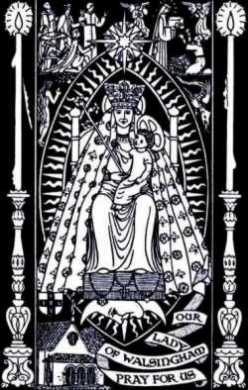




The Churches Conservation trust does marvellous work in conserving beautiful, but redundant Churches throughout the land. It also encourages local congregations and the wider community to use the buildings and offers relatively easy, and completely free, access, which is to be applauded. One of their Churches is Saint Georges, Carrington, which is next to the Vicarage Garden Centre (see below), who have the key readily accessible at their shop. It is not really in Cheshire, to be honest, but like the last one, used to be, so there we are.
It is a fine Georgian building, as you can see, which as you may know is my favourite type of architecture. Inside, it is austere, with box pews, organ, gallery, altar, pulpit and lectern all made from the same wood, the colour only broken by the white of the walls and the occasional plaque. I do not think there has ever been a statue or a whiff of smoke in here, but that may just all change if I have my way next year for the final St Hildas Day Out I will be arranging, before I go I know not where to serve my title, or do my curacy, whatever you want to say. There was a most interesting arrangement of pews in front of the altar, looking rather like a courtroom bench for the clerks, but probably built for the children. I was cheered to see the Book of Common Prayer and a Lectionary left out, so I assume that it sees some use, at least. Whatever you think to Georgian architecture, thank God for men and women who commit their time to curating abandoned Churches, where 'prayer has been valid' for future generations and keeping them accessible.
If you came this way,
Taking any route, starting from anywhere,
At any time or at any season,
It would always be the same: you would have to put off
Sense and notion.
You are not here to verify,
Instruct yourself, or inform curiosity
Or carry report. You are here to kneel
Where prayer has been valid.
And prayer is more
Than an order of words, the conscious occupation
Of the praying mind, or the sound of the voice praying.
And what the dead had no speech for, when living,
They can tell you, being dead: the communication
Of the dead is tongued with fire beyond the language of the living.
Here, the intersection of the timeless moment
Is England and nowhere. Never and always.
Taken from 'Little Gidding' in 'Four Quartets', by TS Eliot.


_Black_s_s_s_s_s.jpg)
